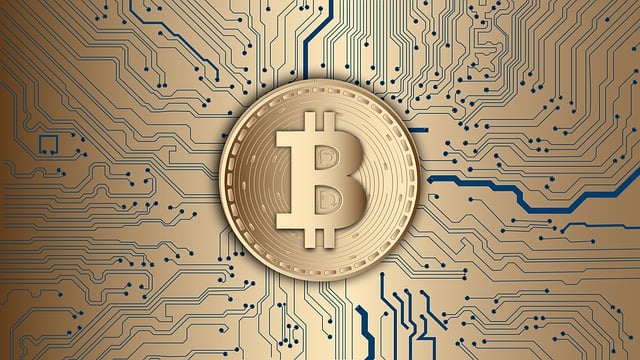Stablecoins bridge traditional finance with decentralized digital currencies, offering a more streamlined cryptocurrency wallet experience compared to Bitcoin or Ethereum. Dedicated stablecoin wallets prioritize simplicity and security, such as biometric authentication, low fees, and easy fiat top-ups, making them ideal for everyday use and newcomers. However, centralized vs. decentralized stablecoin policies differ in access and transparency, while regulatory requirements pose challenges for wallet developers aiming to attract diverse users. Advanced features like multi-currency support and real-time alerts enhance the user experience across all skill levels.
“Stablecoins are transforming cryptocurrency markets, offering a unique blend of digital assets’ advantages and fiat currency’s stability. This article delves into the multifaceted world of stablecoins, exploring their role in enhancing user experiences within cryptocurrency wallets. We compare centralized and decentralized monetary policies, delve into security concerns, and highlight innovations that shape the future of stablecoin wallet design, all while focusing on the crucial aspect: improving the cryptocurrency wallet user experience.”
- Understanding Stablecoins and Their Role in Cryptocurrency Markets
- The Impact of Stablecoin Adoption on User Experience in Wallets
- Comparing Monetary Policies: Centralized vs Decentralized Stablecoins
- Security and Regulatory Considerations for Stablecoin Wallets
- Enhancing User Experience: Innovations in Stablecoin Wallet Design
Understanding Stablecoins and Their Role in Cryptocurrency Markets

Stablecoins, a unique class of cryptocurrencies, play a pivotal role in shaping the dynamics of cryptocurrency markets. Unlike their volatile peers, stablecoins are designed to maintain a steady value, often pegged to a fiat currency like the US Dollar or Euro. This stability makes them an attractive option for investors seeking a safe haven in the crypto space and for everyday users looking to store value securely. In essence, stablecoins serve as a bridge between traditional financial systems and decentralized digital currencies.
When compared to cryptocurrency wallets, the user experience with stablecoins can vary significantly. Digital wallets specifically designed for stablecoins often prioritize simplicity and ease of use, allowing users to easily manage their stablecoin holdings and conduct transactions seamlessly. This is in contrast to general-purpose crypto wallets that may offer a broader range of features but can be more complex for users unfamiliar with blockchain technology. The choice between the two largely depends on an individual’s level of expertise and their primary use case—whether it’s short-term trading, long-term investment, or everyday transactions.
The Impact of Stablecoin Adoption on User Experience in Wallets

The adoption of stablecoins has had a significant impact on the cryptocurrency wallet landscape, offering users an improved and more streamlined experience compared to traditional cryptocurrencies like Bitcoin or Ethereum. Stablecoin wallets often provide faster transaction speeds, lower fees, and enhanced liquidity, making them user-friendly for everyday transactions. This is particularly beneficial for those new to the crypto space, as stablecoins offer a less volatile alternative, reducing the learning curve associated with more volatile assets.
In terms of a cryptocurrency wallet user experience comparison, stablecoin wallets excel in usability. They often integrate seamlessly with existing banking systems, allowing users to easily top up their wallets using fiat currency. This convenience encourages adoption and fosters a positive user experience. Moreover, many stablecoin wallets employ advanced security measures, such as biometric authentication and multi-signature technology, ensuring that user assets remain safe while providing quick access during transactions.
Comparing Monetary Policies: Centralized vs Decentralized Stablecoins

In the realm of cryptocurrency, stablecoins have emerged as a game-changer, offering a unique blend of the stability of fiat currencies with the potential for growth in the digital asset space. When discussing stablecoin monetary policy, one key distinction lies in the underlying structure: centralized versus decentralized stablecoins.
Centralized stablecoins are backed by traditional reserves, such as fiat currencies or commodities, and are issued and managed by a single entity or group. This model provides a user-friendly experience for cryptocurrency wallet holders, as it often involves easier access and conversion to fiat money. However, it raises concerns about centralization of power and potential points of failure. On the other hand, decentralized stablecoins operate on blockchain technology, utilizing smart contracts to maintain their value and distribute control among numerous participants. This approach offers enhanced security and transparency but may present complexities in terms of user experience, especially for those new to cryptocurrency wallets. The decentralized nature requires a deeper understanding of blockchain interactions for users to trust and utilize these stablecoins effectively.
Security and Regulatory Considerations for Stablecoin Wallets

The security and regulatory landscape for stablecoin wallets is a critical aspect that significantly influences the user experience in the cryptocurrency space. Unlike some volatile cryptocurrencies, stablecoins are designed to maintain a steady value, often pegged to a fiat currency like the US dollar. This stability necessitates robust security measures within their wallets to safeguard users’ digital assets. A thorough examination of security protocols, including multi-signature authentication, cold storage options, and advanced encryption, is essential for gaining user trust.
When comparing cryptocurrency wallet user experiences, stablecoin wallets must meet stringent regulatory standards while offering intuitive interfaces. Regulatory considerations, such as anti-money laundering (AML) and know-your-customer (KYC) checks, play a pivotal role in preventing illicit activities. Wallets that seamlessly integrate these measures without compromising user privacy can enhance the overall experience, attracting both casual investors and institutional players who value security and regulatory compliance.
Enhancing User Experience: Innovations in Stablecoin Wallet Design

In the realm of cryptocurrency, stablecoins have emerged as a game-changer, offering a bridge between volatile digital assets and traditional financial systems. One area where stablecoin innovation truly shines is in enhancing the user experience through advanced wallet design. When comparing cryptocurrency wallets, the focus on user-friendly interfaces has become a key differentiator. Stablecoin wallets are not just storing keys; they are sophisticated tools that facilitate seamless interactions with decentralized finance (DeFi) protocols and global payment networks.
Innovators in this space have recognized the need for intuitive navigation, secure multi-currency support, and real-time transaction alerts. Some cutting-edge stablecoin wallets even incorporate features like customizable themes, easy-to-understand analytics dashboards, and innovative security measures such as biometric authentication. These advancements cater to a diverse range of users, from seasoned crypto enthusiasts to newcomers exploring the world of digital currencies, ultimately streamlining the process of managing and utilizing stablecoins in day-to-day transactions.
Stablecoins have emerged as a game-changer in the cryptocurrency landscape, offering improved monetary policy and enhanced user experiences. By bridging the gap between traditional finance and digital assets, stablecoins provide stability and security that were previously lacking in crypto markets. This article has explored various aspects of stablecoin adoption, from their role in facilitating transactions to their impact on wallet design. We’ve also compared centralized and decentralized monetary policies, underscoring the importance of security and regulatory considerations. As we move forward, innovations in stablecoin wallet design will play a crucial role in fostering user adoption and revolutionizing the cryptocurrency wallet experience, ultimately enhancing the overall accessibility and usability of digital currencies.
